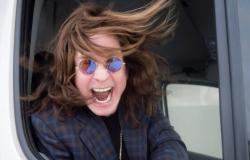– Is that you?
– And you are you?
That random and street meeting between Fito Páez and Luis Alberto Spinetta on the Buenos Aires corner of Santa Fe and Riobamba had its antecedent, random and railway in this case, between Keith and Mick at the Dartford station, a suburb east of London. .
Keith, waiting for his train on the platform with a Chuck Berry album under his arm, saw a boy approach him who seemed familiar from the first moment.
But it was not that familiarity that caught the boy’s attention, but what he had in his hands: not one, but two records. One, with the Chess Record recording of Rockin’ at The Hops, by Chuck Berry; and the other, The Best Muddy Waters, no less.
Mick, the boy with the treasure in the form of two records, was not impressed by the fact that it was his childhood neighbor and his occasional schoolmate, but rather that he had a Chuck Berry record under his arm. Because at that time what united the girls were the records.
Walking with records down the street was much more than carrying music from one place to another, since there was no way to listen to your music if you didn’t carry your records. Showing your records was the way of saying who you were, a door ajar to friendship. Well, in this case it was an open door to some Rolling Stones. And that door is still open, by the way.
– Is that you, Keith?
– And is that you, Mick?
It was definitely them. They could have been friends long before that occasional (and decisive, they will find out later) meeting at the train station in the city where they were both born in 1943.
They could have become friends in the neighborhood: they lived just a block away from each other. Or at Wentworth Primary School, where they were classmates. Mick lived on Denver Street, just a block from the apartment Keith’s family had been given on Chastilian Street.
“Mick worked selling ice cream. He must have been about 15 years old. I bought him a chocolate ice cream. Afterwards I didn’t see him again until that fateful day at the station.
Keith Richards, in his autobiography “Life”.
“Mick and I met because we lived very close, around the corner and because we went to the same school,” says Keith in his autobiography Vida (Planeta, 2018). “But then we moved away from my old school, to the other side of town, to Temple Hill. Mick also moved from Denver Street, but to the other side, a very elegant neighborhood in Dartford.
Despite the moves, Keith and Mick almost met again at school, when Keith transferred to Dartford Tech for his final year of primary school, at the same time as Mick transferred to Dartford Grammar School.
At this point one thing was evident: the Richards and the Jaggers were not part of the same social class. While the Richards were from a lower working middle class, the Jaggers belonged to a well-to-do middle class.
They crossed paths for years in the streets, classrooms and schoolyard and nothing happened. Even a year before the big railway bang at Dartford station, Mick sold Keith a chocolate ice cream and didn’t get the token. At that time, Mick was running an ice cream shop in front of Dartford township but it was evident that a cone didn’t have the magic of a Chuck Berry record: it wasn’t the proximity of years that attracted them, it was rock and roll and blues records. It doesn’t matter that we grew up on the same street and went to the same school. Do you like Chuck Berry? Then we can be good friends.
Everything I know I learned from records. Recorded music was a liberation for a lot of musicians who, like me, didn’t have the money to learn to read and write music. “I don’t need the fucking paper, I’m going to play by ear, from the heart directly to the fingers.”
Keith Richards
Keith could have been two things in his life before being guitarists for one of the most important bands in the history of contemporary popular music. He could have been a footballer, for example. As he mentions in his autobiography, he considered himself a very good left back.
He could also have been a publicist for the Walter J. Thompson agency. In 1959, after being expelled from Dartford Technical School for excessive truancy, he entered Sidcup Art College, “a place where your classmates’ parents were publicists at J. Walter Thompson. They trained you to be a graphic designer, a Letraset typographer,” says Keith in “Vida.”
“Slide guitar was something we had never seen before in England and that night Brian played like that and it was electrifying. He played beautifully well.”
Keith Richards, about the night they met Brian Jones.
Keith went to a job interview to join the advertising agency and admits that he was not very friendly. “Basically, I was looking for an excuse to feel free to throw myself into music.” He left there throwing his folder in the first trash can and decided to become a bluesman: “It was my last attempt to join society on his terms.”
In 2009, shortly before the publication of “Vida” (2010 in English, 2018 in Spanish), a letter that Keith had written to his aunt Patti came to light, who kept it for almost fifty years. In that letter, he remembers the guitarist in his autobiography, telling his aunt about the day she (re)met Mick at Dartford station. The letter was written in April 1962, when both were already buddies looking for a place in the world, especially in music, but not only.
In the letter Keith confesses to his aunt that he thought he was the only Chuck Berry fan in town until he was approached by a guy he knew from grade school who had all of Chuck Berry’s records, from first to last “and all of his friends too” and that, like him, they all like rhythm and blues. “The guy at the station is called Mick Jagger.”
In the letter he also tells him that they all met at Carrusel, a bar with a jukebox, that one morning he passed by there and that they received him very well. “Plus, Mick is the best rhythm and blues singer this side of the Atlantic, and I mean that.”
The letter written in 1962, let’s not forget that fact, continues saying: “Of course they are all rotten with money and live in huge houses…” Keith tells his aunt that when he went to Mick’s house he felt “like a lord.” or something like that”.
The letter will reach the point where that occasional meeting at the station of two old neighbors with Chuck Berry and Muddy Waters records will set off the big bang stone: “Next Saturday Mick and I are going to take a couple of girls to our favorite club.” of rhythm and blues in Ealing”. That Saturday, April 7, 1962, they met a guitarist who, Keith recalls in his book, played beautifully well. “Slide guitar was something never seen before in England and that night Brian played like that.” He was Brian Jones.
He belonged to the London circuit. He studied at the London School of Economics and knew all kinds of people. I didn’t have money. Nor knowledge.
Keith Richards, about Mick Jagger, taken from “Life”, his autobiography.
Mick approached the guitarist who at that time called himself Elmo Lewis and learned that the guy had a band and that he invited them to play with them one of those days. Of course they went. And because they were, The Rolling Stones exists.
In May, just a few weeks after that night in Ealing, Mick and Keith finally stopped by the Bricklayers, the pub where Brian used to rehearse with his band. There they found a huge guy playing the piano. It was Ian Stewart, who impressed them both as much as Brian Jones had impressed them.
From those rehearsals only Mick, Keith, Brian, Ian Stewart and a bassist, Dick Taylor on bass, remained. Geoff Bradford and Brian Knight decided to form their own group without knowing that they were leaving The Rolling Stones. In their favor it must be said that those who stayed did not know it either.
Either you were jazz and blues or you were more rock and roll. But rock and roll had died to become pop and there was nothing left. “We insisted on the term rhythm and blues because it brought us closer to the most powerful blues bands in Chicago.”
Keith Richards.
A singer, two guitarists, a pianist and a bassist: they were missing a drummer. Everyone had in mind Charlie Watts, the drummer of Blues Incorporated, the rhythm and blues band that played at the Ealing Club. But it wouldn’t be Charlie Watts, not just yet. Mick Avory joined the group. With him on drums and Dick Taylor on bass, The Rolling Stones gave their first show, on July 12, 1962, at the Marquee Club.
A few weeks later, Avory would leave the band to join the Davis brothers and found The Kinks. In his place would be Tony Chapman, who lasted less than Avory. Chapman was the one who suggested the name Bill Wymann to the band to replace Dick Taylor.
Without Chapman, who left because he felt he didn’t fit the style of The Rolling Stones, there were no longer excuses to go find the drummer everyone wanted from the beginning: Charlie Watts. It wasn’t easy to convince him. “If you guarantee me a couple of concerts a week I’m in,” he challenged them. Obviously, they guaranteed it.
Two locations: Dartford station and the Ealing Club. Two dates: October 17, 1961 and April 7, 1962. Three subjects: Keith Richards, Mick Jagger and Brian Jones. But let’s go back a little to that time. The reclusive Mick has a band, Little Boy Blue & the Blue Boys, of which he was obviously the singer. After that meeting at Dartford station, Mick invites Keth to join his band. Keith accepts and becomes a blue boy.
Is this the beginning of The Rolling Stones? Yes, in part. Because there would be no Stones without that meeting, but also without that other one that occurred some time later, at the Ealing Club, between them and Brian Jones. And because it was at Brian Jones’s request that Keith and Mick joined him in a rhythm and blues project that would later become The Rolling Stones.





